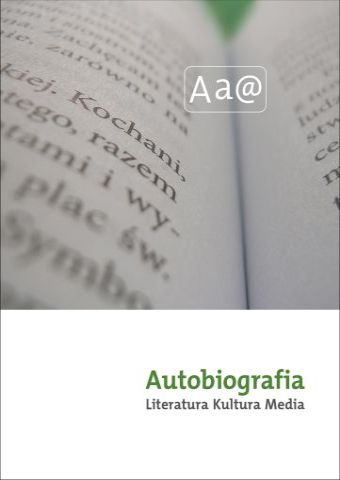






| Authors: |
ANIKA
WALKE

Washington University, St. Louis |
| Keywords: | Belarus Hermanavichy Jewish history Holocaust biography |
| Data publikacji całości: | 2020 |
| Page range: | 22 (123-144) |
| 1. | Anthias, Floya. “Where Do I Belong? Narrating Collective Identity and Translocational Positionality.” Ethnicities 2 (2002), 4: 491–514. |
| 2. | Arad, Yitzhak. The Holocaust in the Soviet Union. Lincoln: University of Nebraska Press, 2009. |
| 3. | Arad, Yitzhak. “Plunder of Jewish Property in the Nazi-Occupied Areas of the Soviet Union.” Yad Vashem Studies 29 (2001): 109–148. |
| 4. | Bekus, Nelly. Struggle over Identity: The Official and the Alternative “Belarusianness.” Budapest–New York: Central University Press, 2010. |
| 5. | Bemporad, Elissa. Becoming Soviet Jews: The Bolshevik Experience in Minsk. Bloomington: Indiana University Press, 2013. |
| 6. | Chiari, Bernhard. Alltag hinter der Front: Besatzung, Kollaboration und Widerstand in Weissrussland 1941–1944. Düsseldorf: Droste Verlag, 1998. |
| 7. | Dean, Martin. Collaboration in the Holocaust: Crimes of the Local Police in Belorussia and Ukraine, 1941–1944. New York: Palgrave Macmillan, 2000. |
| 8. | Dean, Martin. “Jewish Property Seized in the Occupied Soviet Union in 1941 and 1942: The Records of the Reichshauptkasse Beutestelle.” Holocaust and Genocide Studies 14 (2000), 9: 83–101. |
| 9. | Dean, Martin. Robbing the Jews: The Confiscation of Jewish Property in the Holocaust, 1933–1945. New York: Cambridge University Press, 2008. |
| 10. | Desbois, Patrick. The Holocaust by Bullets: A Priest’s Journey to Uncover the Truth Behind the Murder of 1.5 Million Jews. New York: Palgrave Macmillan, 2008. |
| 11. | Exeler, Franziska. “What Did You Do during the War? Personal Responses to the Aftermath of Nazi Occupation.” Kritika 17 (2016), 4: 805–835. |
| 12. | Gerlach, Christian. Kalkulierte Morde: Die deutsche Wirtschafts- und Vernichtungspolitik in Weißru߬land, 1941 bis 1944. Hamburg: Hamburger Edition, 1999. |
| 13. | Gimpelevich, Zina. The Portrayal of Jews in Modern Bielarusian Literature. Montreal: McGill-Queen’s University Press, 2018. |
| 14. | Gross, Jan Tomasz, Irena Grudzinska Gross. Golden Harvest: Events at the Periphery of the Holocaust. New York: Oxford University Press, 2012. |
| 15. | Karpekin, Konstantin. Istoricheskaia Spravka: Lepel’skii kontslager’. Accessed 12.02.2020. http://mishpoha.org/vspominayut-uzniki/737-nash-gost-ada-rajchonok. |
| 16. | Keding, Ekaterina. “Konkurrenz der Erinnerungen: Partisanenwiderstand und Holocaust in der belarussischen Gedenkkultur.” In: Ein weißer Fleck in Europa… Die Imagination der Belarus als Kontaktzone zwischen Ost und West, eds. Thomas M. Bohn, Victor Shadurski, 159–171. Biele¬feld: Transcript, 2011. |
| 17. | Kuntsevich, Frantishek. Moi vospominania iz detstva: O svoikh odnosel’chaniakh evreiakh iz mestechka Germanovichi Vitebskoi oblasti za period 1931–1943gg. Gdansk: n.p., 1996. |
| 18. | Manley, Rebecca. To the Tashkent Station: Evacuation and Survival in the Soviet Union at War. Ithaca: Cornell University Press, 2009. |
| 19. | Moch, Leslie, Lewis Siegelbaum. Broad Is My Native Land: Repertoires and Regimes of Migration in Russia’s Twentieth Century. Ithaca: Cornell University Press, 2014. |
| 20. | Oushakine, Serguei. “How to Grow out of Nothing: The Afterlife of National Rebirth in Postcolo¬nial Belarus.” Qui Parle 26 (2017), 2: 423–490. |
| 21. | Rein, Leonid. The Kings and the Pawns: Collaboration in Byelorussia during World War II. New York: Berghahn Books, 2011. |
| 22. | Rivkin, Mikhail, Arkadii Shulman. Khronika strashnykh dnei: Tragedia Vitebskogo getto. Minsk: Medizont, 2014. |
| 23. | Romanovsky, Daniel. “The Holocaust in the Eyes of Homo Sovieticus: A Survey Based on Northeast¬ern Belorussia and Northwestern Russia.” Holocaust and Genocide Studies 12 (1999), 3: 371–373. |
| 24. | Romanovsky, Daniel. “Vitebsk.” In: Encyclopedia of Camps and Ghettos, 1933–1945. Vol. 2: Ghet¬tos in German-Occupied Eastern Europe, ed. Martin Dean, 1745–1746. Bloomington: Indiana University Press, 2012. |
| 25. | Rothberg, Michael. Multidirectional Memory: Remembering the Holocaust in the Age of Decoloniza¬tion. Stanford: Stanford University Press, 2009. |
| 26. | Shul’man, Arkadii. Nash gost’ Ada Raichonak. Accessed 12.02.2020. http://mishpoha.org/ vspominayut-uzniki/737-nash-gost-ada-rajchonok. |
| 27. | Shul’man, Arkadii. Perel’many iz Luzhkov. Accessed 12.02.2020. http://mishpoha.org/library/04/0405.php. |
| 28. | Shul’man, Arkadii. V gostiakh u Ady El’evny. Accessed 12.02.2020. http://mishpoha.org/pamyat/270-v-gostyakh-u-ady-elevny. |
| 29. | Sloin, Andrew. The Jewish Revolution in Belorussia: Economy, Race, and Bolshevik Power. Bloom¬ington: Indiana University Press, 2017. |
| 30. | Smalianchuk, Aliaksandr. “Tragedyia khalakostu i ie prychyny ŭ vusnykh uspaminakh Belarusaŭ.” In: Homo Historicus 2016: Gadavik antrapalagichnai gistorii, ed. Aliaksandr Smalianchuk, 172– 183. Vilnius: Bielaruski kaliehium, 2016. |
| 31. | Smilovitsky, Leonid. Jewish Life in Belarus: The Final Decade of the Stalin Regime (1944–53). Buda¬pest–New York: Central European University Press, 2014. |
| 32. | Suedfeld, Peter, Helen Paterson, Erin Soriano, Samantha Zuvic. “Lethal Stereotypes: Hair and Eye Color as Survival Characteristics During the Holocaust.” Journal of Applied Social Psychology 32 (2002), 11: 2368–2376. |
| 33. | Vinnitsa, Gennadii. Listy Istorii. Vitebsk: Vitebskii Tsentr Marketinga, 1999. |
| 34. | Vinnitsa, Gennadii, Martin Dean. “Hermanowicze.” In: Encyclopedia of Camps and Ghettos, 1933– 1945. Vol. 2: Ghettos in German-Occupied Eastern Europe, ed. Martin Dean, 1196. Bloomington: Indiana University Press, 2012. |
| 35. | Vinnitsa, Gennadii, Martin Dean. “Sczarkowszczyzna.” In: Encyclopedia of Camps and Ghettos, 1933–1945. Vol. 2: Ghettos in German-Occupied Eastern Europe, ed. Martin Dean, 1289–1290. Bloomington: Indiana University Press, 2012. |
| 36. | Waligórska, Magdalena. “Jewish Heritage and the New Belarusian National Identity Project.” East European Politics and Societies and Cultures 30 (2016), 2: 338–340. |
| 37. | Waligórska, Magdalena. “Remembering the Holocaust on the Fault Lines of East and West-Euro¬pean Memorial Cultures: The New Memorial Complex in Trastsianets, Belarus.” Holocaust Studies 24 (2018), 3: 329–353. |
| 38. | Walke, Anika. Pioneers and Partisans: An Oral History of Nazi Genocide in Belorussia. New York: Oxford University Press, 2015. |
| 39. | Walke, Anika. “Split Memory: The Geography of Holocaust Memory and Amnesia in Belarus.” Slavic Review 77 (2018), 1: 174–197. |
| 40. | Wylegała, Anna. “Listening to the Different Voices: Jewish, Polish, and Ukrainian Narratives on Jewish Property in Nazi-Occupied Eastern Galicia.” In: The Holocaust in the Borderlands: Interethnic Relations and the Dynamics of Violence in Occupied Eastern Europe, eds. Gaëlle Fisher, Caroline Mezger, 157–183. Göttingen: Wallstein Verlag, 2019. |
| 41. | Interviews: |
| 42. | Raichonak, Ada. Interview with author. Hermanavichy. 5.06.2018. |
| 43. | Raichonak, Ada. Interview with Ida Shenderovich. Hermanavichy. July 2015. |
| 44. | Internet resources: |
| 45. | “Ada Raichonok: Ia mogu podoiti i dat’ poshchechiny.” BelGazeta. 28.07.2008. Accessed 10.02.2020. http://www.belgazeta.by/ru/2008_07_28/radosti_zhizni/17048/. |
| 46. | “Adu Raichonak uznagarodzili medalem da 100-goddzia BNR.” Ratsyia. 24.02.2020. Accessed 24.02.2020. https://www.racyja.com/hramadstva/adu-rajchonak-uznagarodzili-medalyom-d/. |
| 47. | “Dni evreiskoi kul’tury v Polotske.” National Museum for History and Culture, Polotsk. 10.07.2013. Accessed 10.02.2020. http://polotsk.museum.by/node/34058. |
| 48. | “Galereia Ady.” Evreiskii mir za nedeliu, 189. Accessed 10.02.2020. http://newswe.com/index.php?go=Pages&in=view&id=879. |
| 49. | Khudozhestvennyi plener v derevne Germanovichi. Belsat TV. 12.10.2017. Accessed 12.02.2020. https://belsat.eu/ru/programs/natsionalnoe-graffiti-vyhodit-iz-podpolya/. |
| 50. | “Kletski, draniki i ‘bul’bianoi striptiz’ – v Germanovichakh proshel festival’ kartofel’nykh bliud.” Komsomol’skaia Pravda Belarus. 29.06.2015. Accessed 10.02.2020. https://www.kp.by/online/ news/2094878/. |
| 51. | “Laureatam premii ‘Za svabody dumki’ stala Ada Raichonak.” Rukh Za Svabodu. 19.06.2010. Accessed 10.02.2020. https://pyx.by/rus/news/93/. |
| 52. | Labetskaia, Iulia. 150 Zolotykh Marshrutov Moei Belarusi – Germanovichi. Accessed 2.09.2020. https://7dney.by/ru/issues?art_id=6070. |
| 53. | “Premia ‘Za svabodu dumki’ imeni Bykava.” Rukh Za Svabodu. 23.06.2019. Accessed 10.2.2020. https://mff.by/bel/campaign/4/. |
| 54. | Uchrezhdenie kul’tury “Khudozhestvenno-etnograficheskii musei imeni Ia.N. Drozdovicha.” Accessed 18.02.2020. http://germanovichi.museum.by. |
| 55. | Documentary film: |
| 56. | Kolas, Uladzimir. Ada Gallery (documentary film). Poland–Belarus: Studio Filmowe Everest, 2008. |